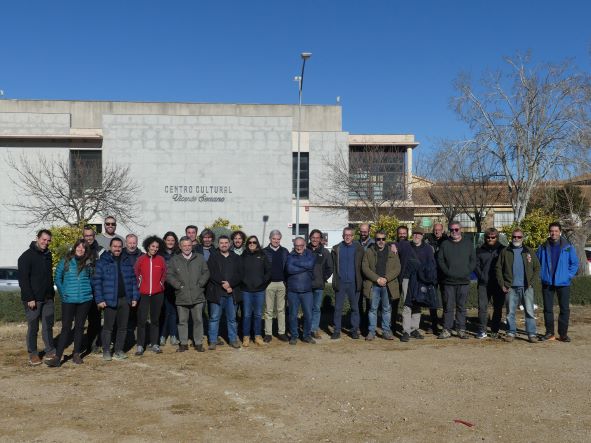Researchers from the Forestry Science and Technology Centre of Catalonia (CTFC) have participated in a meeting, held form February 3rd until the 5th in Cabeza del Buey (Extremadura, Spain), to form a specialist group in steppe birds: bird species associated with open habitats dominated by grasses or small scrublands, strongly linked to historical low-intensity agricultural practices in the Iberian Peninsula. These birds, such as the Great bustard, the Little bustard, the Black-bellied sandgrouse, the Dupont’s lark or the Lesser Kestrel, have suffered a sharp decline in recent decades as a result of changes in European agricultural policies, and are among the most endangered group of birds in the world.
The main objective of the meeting was the formation of a stable group of scientists that will try to fill the existing gaps in the knowledge about ecology and conservation of these species. As well, this group aims to become a reference voice to advising management measures for agricultural practices that guarantee the viability of the high biodiversity existing in these habitats. For the moment, the group has focused on Portugal and Spain, given the importance of these countries for the target species, but aiming to extend its scope to the European and international level. Several working groups have already been defined and will implement various research initiatives, workshops, development and implementation of standard methodologies and dissemination activities.
The group is committed to holding regular meetings and creating opportunities for knowledge exchange between the researchers and their students and is already planning to hold an international conference on steppe birds by the end of 2024, to celebrate 20 years since the last meeting on the subject.
Last modified: 21 June 2023










